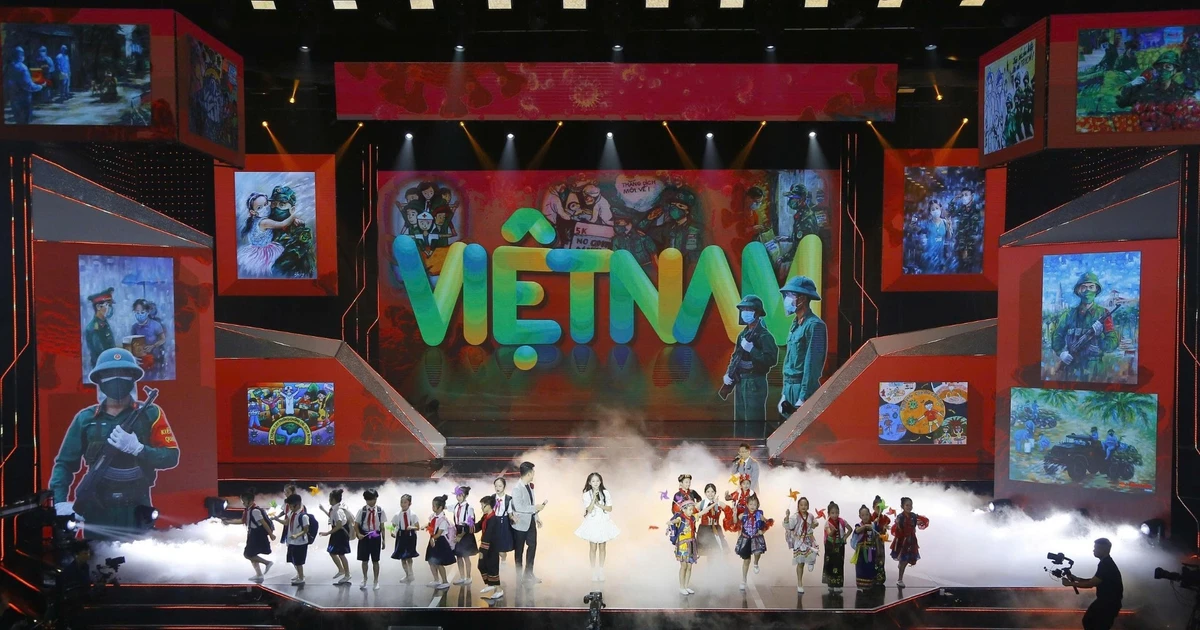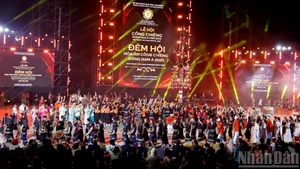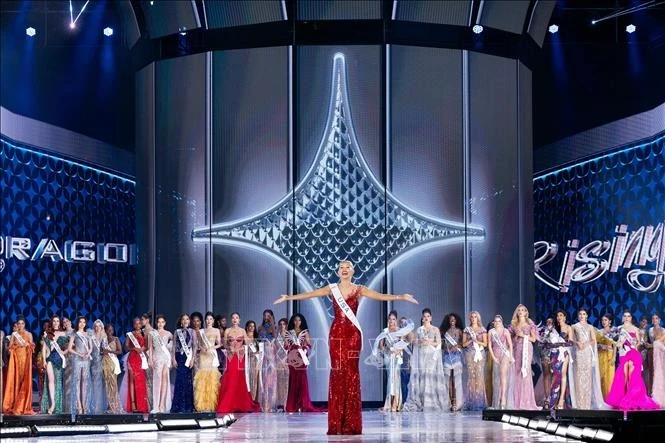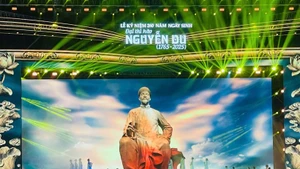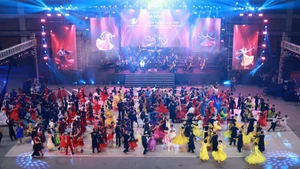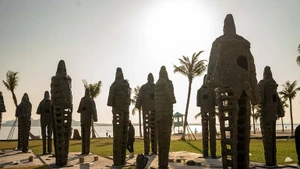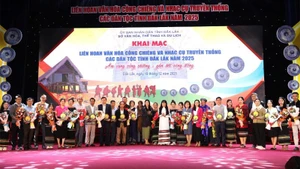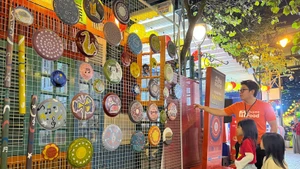At TIFF 2025, Viet Nam, for the first time, had its own independent and official pavilion at TIFFCOM — one of the largest film and television markets in Asia. Themed “Vietnamese Cinema’s Voice Reaching Out Globally”, the pavilion was organised by the Viet Nam Film Development Association (VFDA) in coordination with the Embassy of Viet Nam in Japan and localities including Da Nang, Quang Ninh, Son La, Dien Bien, and Hai Phong. A seminar titled “Viet Nam on Screen: A Regional Voice Reaching Global Heights” also attracted hundreds of producers, directors, and distributors.
Dr Ngo Phuong Lan, President of the VFDA, said: “The VFDA’s participation in the 38th TIFF is on a much larger scale and with more diverse activities compared with 2019 and 2022. Through this series of promotion activities, we aim to further introduce Vietnamese cinema to major international markets and film festivals.”
Earlier, at the 30th Busan International Film Festival (BIFF) in the Republic of Korea (September 17–26), the VFDA organised various activities such as seminars, a pavilion, and bilateral meetings. Similarly, at the 78th Cannes Film Festival in May in France, the Vietnamese delegation showcased the overall picture of Vietnamese cinema and its international integration achievements; the production capabilities of Vietnamese film enterprises; and held a “Vietnamese Cinema Night” programme.
Vietnamese cinema needs playgrounds like HANIFF for Vietnamese creativity to meet the world and affirm national identity.
People’s Artist Dang Nhat Minh
Nguyen Trung Khanh, Director General of the Viet Nam National Authority of Tourism, emphasised: “We are working to build a more favourable environment for film production, support foreign film crews, and expand partnerships in destination promotion through cinema and digital media.”
Alongside “outbound promotion”, Vietnamese cinema is also inviting the world to international film festivals held in Viet Nam, with the aim of creating a multidimensional exchange environment. Prominent examples include the Ha Noi International Film Festival (HANIFF) and the Da Nang Asian Film Festival (DANAFF). At the 7th HANIFF (2024), themed “Cinema: Creativity–Take-off”, a selection of 117 films from 51 countries were featured, attracting 800 international delegates. Beyond screenings, the event included seminars, discussion sessions, masterclasses, and various side activities, fostering cultural dialogue among different film industries.
People’s Artist Dang Nhat Minh said: “Vietnamese cinema needs playgrounds like HANIFF for Vietnamese creativity to meet the world and affirm national identity.”
Dang Tran Cuong, Director General of the Viet Nam Cinema Department (Ministry of Culture, Sports and Tourism), expressed confidence that HANIFF is taking off, becoming a symbol of integration for Vietnamese cinema.
Recently, the 3rd DANAFF took place from June 29 to July 5, under the theme “DANAFF – the Asian Bridge”, further demonstrating Viet Nam’s determination to build a professional, internationally recognised cinematic platform. Alongside showcasing and honouring outstanding films, the event also created opportunities for networking, cooperation, and the sharing of inspiration among filmmakers, artists, and audiences.
Promotional efforts for Vietnamese cinema in recent years have produced positive results. According to the Viet Nam Cinema Department, domestic box office revenue grew by an average of 20% per year from 2021–2023, and has continued with strong growth in 2024–2025. Cinema has also acted as a “messenger” promoting tourism and the national image, with examples such as “Yellow Flowers on the Green Grass” (2015), “Kong: Skull Island” (2017) and “Dreamy Eyes” (2019).
Vietnamese cinema will only truly integrate when it preserves the national identity, and it must use that Vietnamese identity to conquer the world.
People’s Artist Dang Nhat Minh
To realise the aspiration of reaching the global stage, experts believe Vietnamese cinema needs concrete strategies. First, a comprehensive support ecosystem must be developed, from preferential tax policies for international film crews to investment in infrastructure and post-production, thereby creating a favourable and long-term cooperative environment to attract investment and make Viet Nam a leading Asian filming destination.
Second, talent training and international cooperation should be prioritised to develop human resources, improve script quality, and enhance technology. Finally, it is necessary to focus on content that reflects the national cultural identity, in alignment with global integration trends, as outlined in the Strategy for the Development of Viet Nam’s Cultural Industries to 2030, with a vision to 2045.
People’s Artist Dang Nhat Minh emphasised that Vietnamese cinema will only truly integrate when it preserves the national identity, and it must use that Vietnamese identity to conquer the world.


